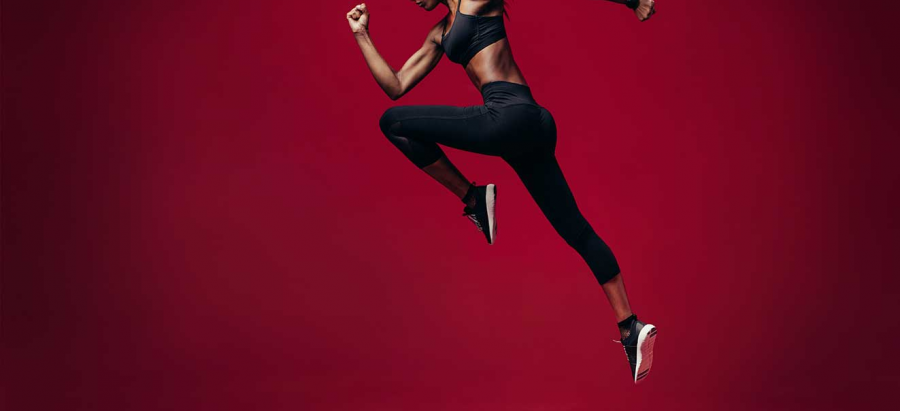Welcome to another post here at Progressive Running, your trusted companion on the journey to better running.
As we individually lace up our shoes and hit the trails, it’s easy to overlook the complex interplay of forces at work with each stride. Many of us, myself included, have long believed that running is all about the powerful push-off from our legs, a testament to our muscular strength and endurance. But what if I told you that this widely accepted notion might not be entirely accurate? The true secret to efficient running might just lie in the art of falling forward. Yes, you read that right. Intrigued? Let’s dive deeper into this concept and unravel where many runners often go wrong about the source of propulsion in running.
Truth about source of propulsion at running
The true source of propulsion in running may be something we often overlook – the force of gravity, or more specifically, the gravitational torque. This concept, often referred to as “falling forward,” is a more efficient way to harness the natural forces at play during running. As we lean forward while running, our body’s center of mass moves ahead of our point of support, creating a torque due to gravity. This gravitational torque propels us forward, initiating the next step. Instead of wasting energy pushing off the ground or moving upwards, we’re essentially allowing gravity to do the work for us. This method of propulsion is not only more energy-efficient, but it also reduces the impact forces on our body, potentially leading to a lower risk of injury.
Building on this understanding of gravity as the primary source of propulsion, we can reframe our perspective on the role of our muscles in running. Rather than being the primary drivers of forward motion, our muscles, in fact, facilitate the use of gravity for propulsion. The key lies in coordinating our muscular actions to maintain balance and control as we allow gravity to pull us forward. For instance, our quadriceps control the descent of the body’s center of gravity after landing, while our hamstrings help to quickly lift the foot off the ground, preparing for the next stride. Our core muscles help maintain our body alignment, ensuring that we lean forward at the right angle to optimize the gravitational torque. In this way, our muscles work in harmony with gravity, not against it, to move us forward efficiently and sustainably.
Beating general public misperception of movement
Quads do not propel us
Becoming a bit scientific, in a fascinating study shared on the Pose Method website, titled “Theory & Practice: The Extensor Paradox in Running”, the conventional understanding of running propulsion is challenged. The research reveals that the quadriceps, muscles we often associate with the ‘push-off’ phase in running, actually cease their activity immediately after the mid-stance. This surprising finding contradicts the widely held belief that leg extension and muscular push-off are the primary sources of forward propulsion in running. Instead, it suggests a more nuanced understanding of running mechanics, where the role of the quadriceps is primarily to control the descent of the body’s centre of gravity after landing.
Calf muscles cause trouble
Another common misconception about running propulsion involves the use of the calf muscles in a technique often referred to as “pawback” or “toe push-off”. This method, while seemingly intuitive, may not be as efficient as one might think. The force generated during this action aligns with the extension of the standing leg on the ground, but it’s important to note that this force is not primarily horizontal. Instead, it has a significant vertical component that propels the runner upwards. This upward motion can be inefficient on two fronts. Firstly, the energy expended to move vertically is essentially wasted, as it does not contribute to forward momentum. Secondly, the subsequent descent from this heightened position increases the impact pressure upon landing, potentially leading to greater wear and tear on the body.
Top runners are not perfect
Even the world’s top runners are not immune to the challenges of achieving perfect running form. The ideal model of running, where every stride is a seamless interplay of gravity and muscular coordination, is a lofty goal that is difficult to attain. This is due to the complex nature of running, which involves not just physical prowess, but also intricate biomechanics, precise timing, and a deep understanding of one’s body. Even elite runners have their unique quirks and idiosyncrasies in their running styles, which may not align perfectly with the theoretical ideal. However, this doesn’t diminish their accomplishments or their mastery of the sport. Instead, it underscores the fact that running is a deeply personal endeavour, and perfection lies in continuously learning, adapting, and striving to improve, rather than achieving an elusive ideal.
Watch this video, form analysis of Usain Bolt by Pose Method. Amazing to see the room for improvement for a world champion! There is hope for those who want to beat him ;)


Comments are closed.